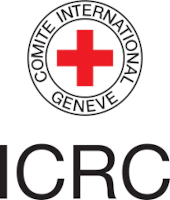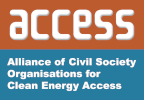Knowledge fuels change
For over a decade, Energypedia has shared free, reliable energy expertise with the world.
We’re now facing a serious funding gap.
Help keep this platform alive — your donation, big or small, truly matters!
Thank you for your support
Difference between revisions of "WE4F Quiz"
From energypedia
***** (***** | *****) m Tag: 2017 source edit |
***** (***** | *****) m Tag: 2017 source edit |
||
| (3 intermediate revisions by the same user not shown) | |||
| Line 4: | Line 4: | ||
<div style="padding:0.4em 1em 0.3em 1em;"> | <div style="padding:0.4em 1em 0.3em 1em;"> | ||
<quiz display=simple shuffleanswers=true> | <quiz display=simple shuffleanswers=true> | ||
| − | { How much of the food produced worldwide would you guess is being lost within the supply chain from post harvest up to, but excluding, the retail level? | + | {How much of the food produced worldwide would you guess is being lost within the supply chain from post harvest up to, but excluding, the retail level? |
| typ="()" } | | typ="()" } | ||
- 33% | - 33% | ||
| Line 11: | Line 11: | ||
|| For more info [https://www.fao.org/state-of-food-agriculture/2019/en/ visit this website.] | || For more info [https://www.fao.org/state-of-food-agriculture/2019/en/ visit this website.] | ||
| − | + | {Which of the following sustainable approaches can be adopted by farmers on site and in further steps of the supply chain to minimize post harvest food loss? | |
| − | |||
| − | |||
| − | |||
| − | |||
| − | |||
| − | |||
| − | { Which of the following sustainable approaches can be adopted by farmers on site and in further steps of the supply chain to minimize post harvest food loss? | ||
| typ="()" } | | typ="()" } | ||
- Solar Cooling | - Solar Cooling | ||
| Line 25: | Line 18: | ||
- Solar powered Ice Production | - Solar powered Ice Production | ||
+ All of them and more | + All of them and more | ||
| − | || For more info [https://we4f.org/innovator-news/we4f-and-miyonga-the-trainings-must-go-on | + | || For more info [https://we4f.org/innovator-news/we4f-and-miyonga-the-trainings-must-go-on read this article.] |
| − | { What is your best guess on how many people in Sub Saharan Africa currently have access to electricity and how the estimation for 2030 looks like? | + | {What is your best guess on how many people in Sub Saharan Africa currently have access to electricity and how the estimation for 2030 looks like? |
| typ="()" } | | typ="()" } | ||
- From 80% to 85% | - From 80% to 85% | ||
- From 65% to 70% | - From 65% to 70% | ||
+ From 50% to 60% | + From 50% to 60% | ||
| − | || For more info [[Publication | + | || For more info [[Publication - World Energy Outlook 2021|read this publication]] |
| − | { | + | {One way to achieve affordable, reliable, sustainable energy is to improve the grid. However, this is a costly undertaking. What’s your best guess on what share of the required investment is actually being invested in Sub Saharan Africa? |
| typ="()" } | | typ="()" } | ||
| − | - | + | - 55% |
| − | - | + | - 25% |
| − | + | + | + 15% |
| − | || For more info [[ | + | || For more info [[Publication - World Energy Outlook 2021|read this publication]] |
| − | { | + | {Another way to approach that target is to establish a decentralized power infrastructure. Consequently, photovoltaic modules and their affordability are of high interest. What’s your best guess on how much the price of PV modules decreased globally between 2009 and 2015? |
| typ="()" } | | typ="()" } | ||
| − | - | + | - 60% |
| − | - | + | - 45% |
| − | + | + | + 80% |
| − | || For more info [ | + | || For more info [https://www.irena.org/-/media/Files/IRENA/Agency/Publication/2016/IRENA_Solar_PV_Costs_Africa_2016.pdf visit this website.] |
| − | { | + | {Considering the insufficient investments in the accessibility of electricity and the strong cost decrease of PV modules, solar based innovations gain attractiveness. Nevertheless, these need to be financed. Which of the following innovative approaches are promising? |
| typ="()" } | | typ="()" } | ||
| − | - | + | - Digital Financing |
| − | - | + | - Pay-Go models for solar products |
| − | + | - Asset Funding | |
| − | + | - Pay-As-You Chill for cold rooms | |
| − | + | - Microfinance for woman | |
| − | + | + All of them and more … | |
| − | + | || For more info [https://we4f.org/wp-content/uploads/2021/12/2021_EA-RIH_WeTu.pdf read this Infosheet.] | |
| − | |||
| − | - | ||
| − | - | ||
| − | - | ||
| − | - | ||
| − | + All of them | ||
| − | || For more info [ | ||
| − | |||
</quiz> | </quiz> | ||
</div> | </div> | ||



















